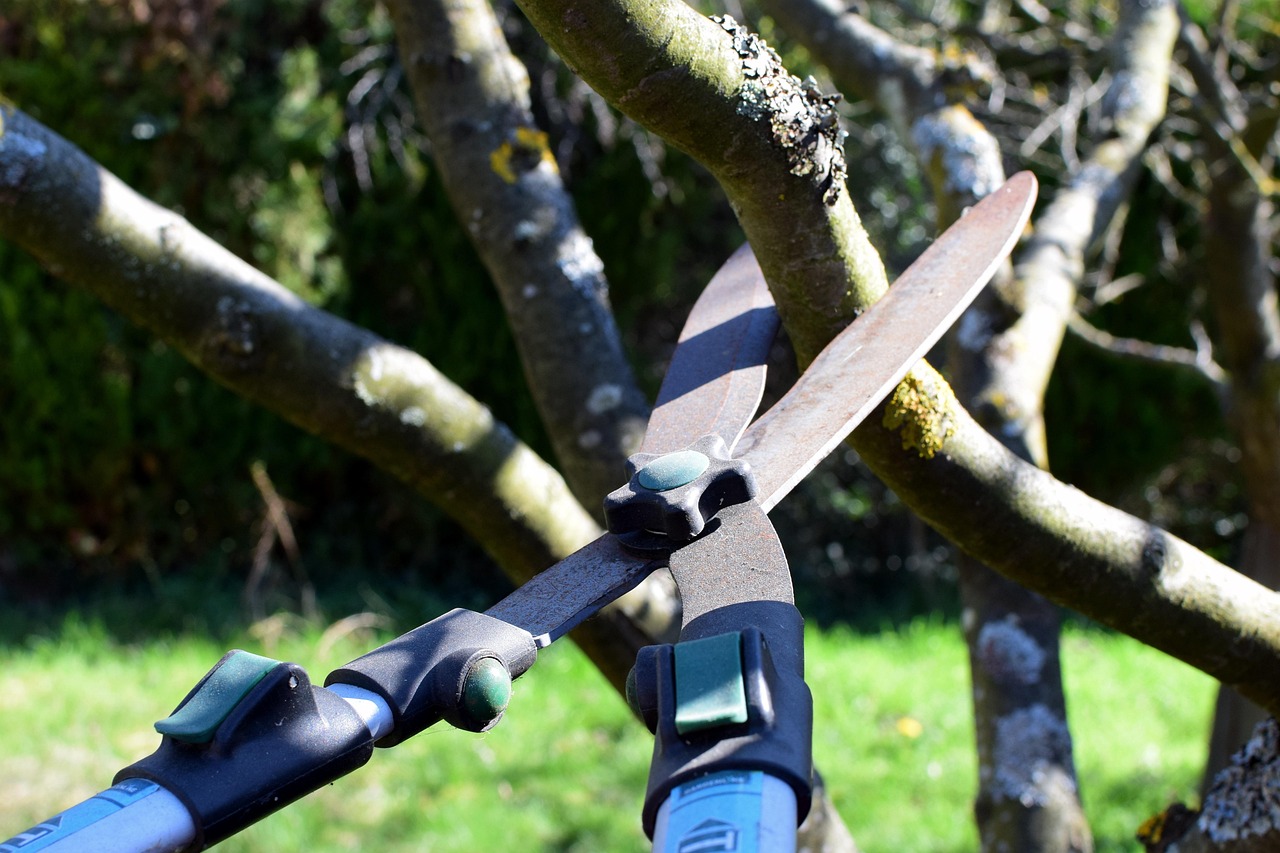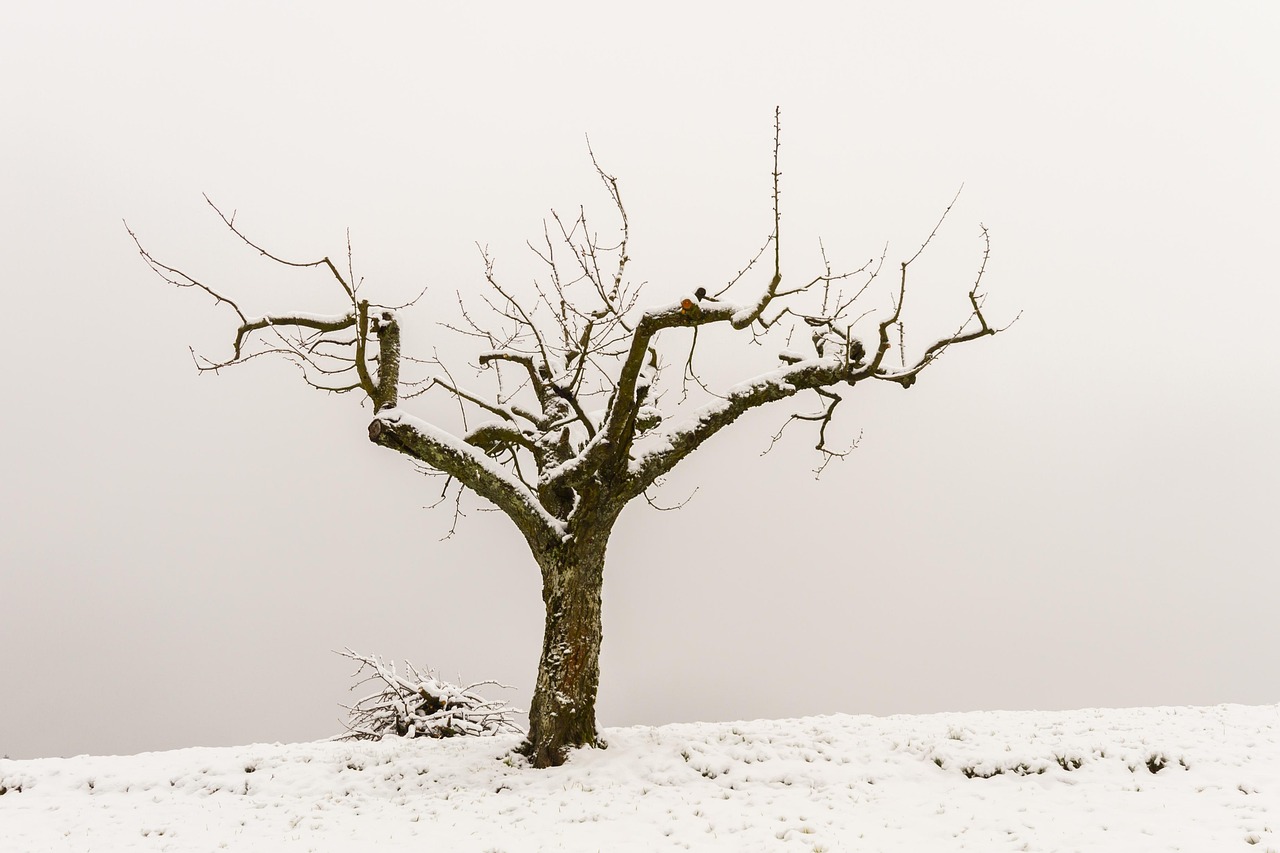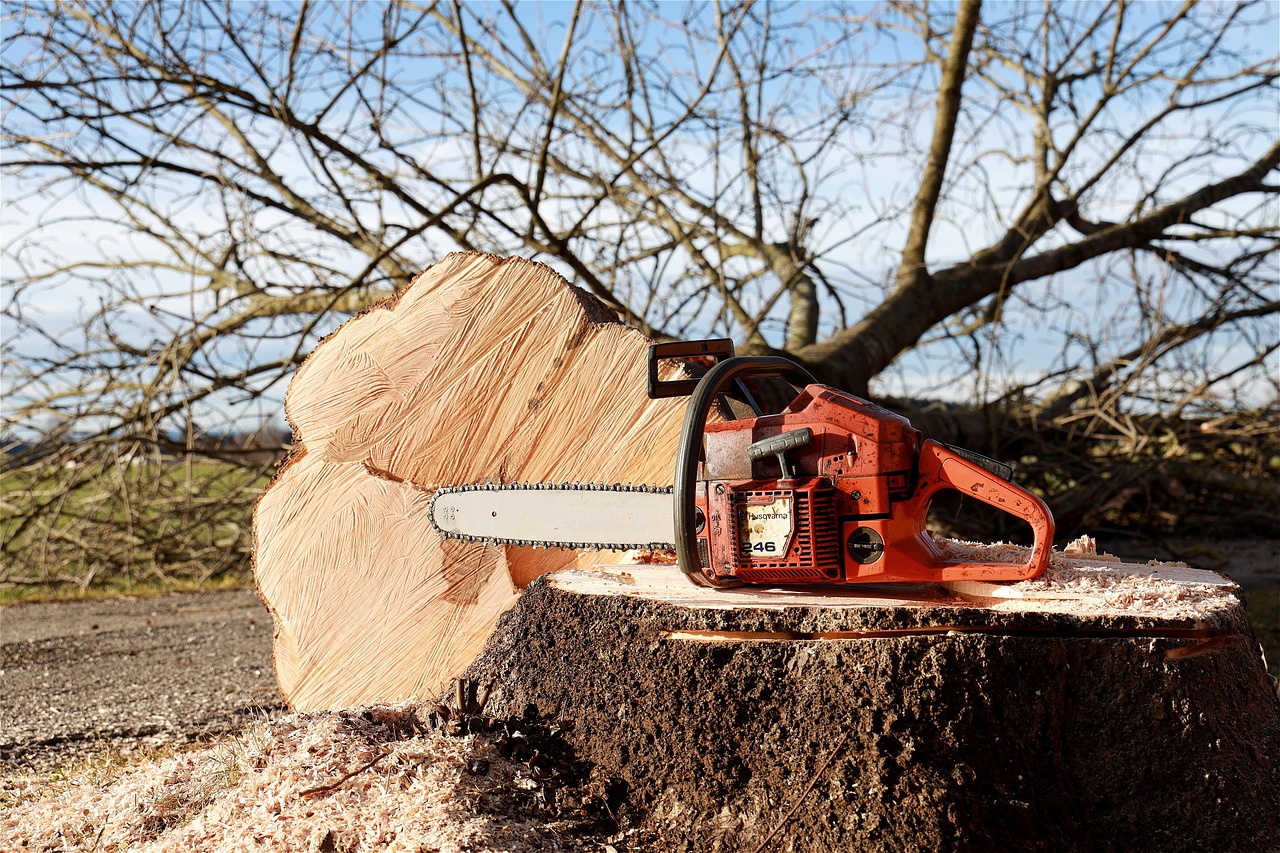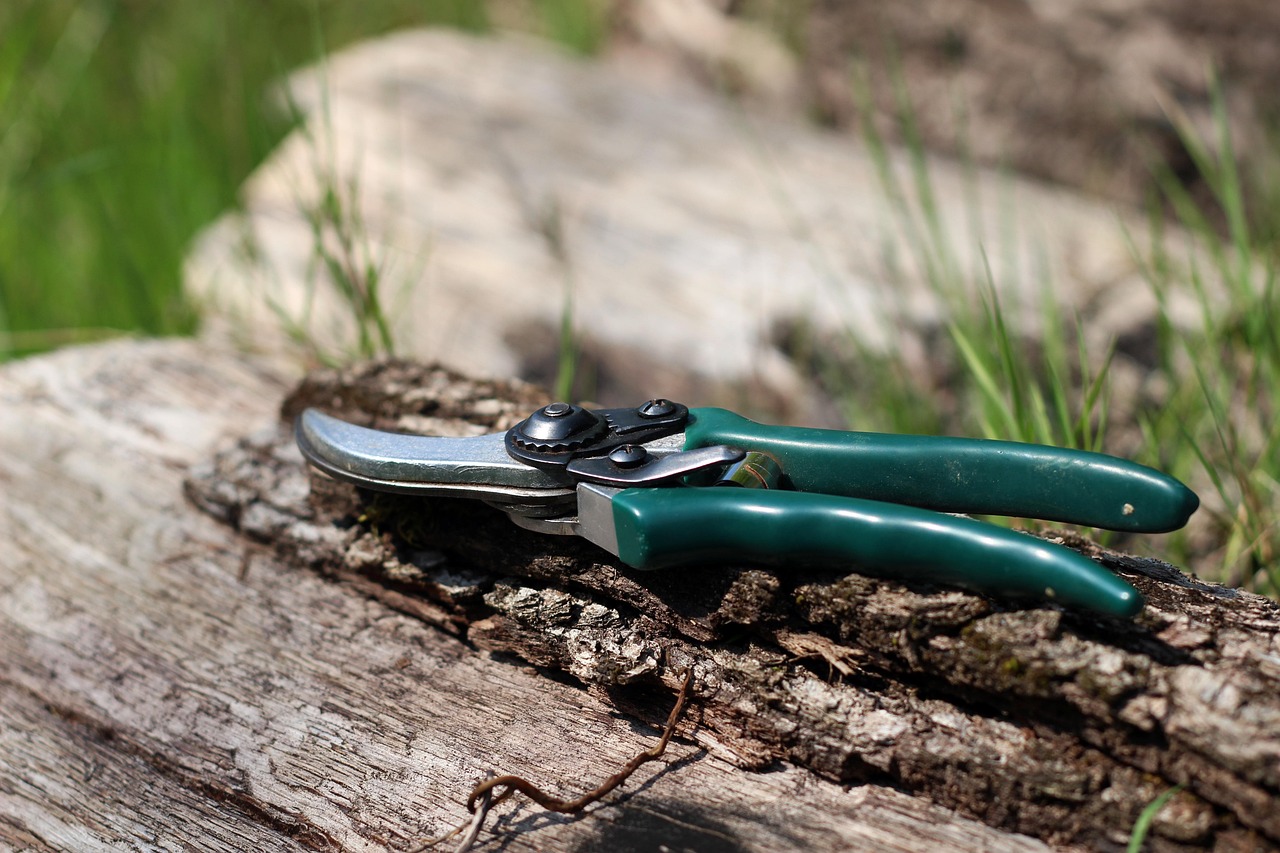Proper tree pruning is vital for minimalist landscapes, shaping trees to enhance aesthetics, promote health, and maintain open, clean spaces. By following key techniques, timing, and choosing suitable tools, you can ensure your trees contribute to a serene, balanced environment aligned with the principles of simplicity and elegance.
Minimalist landscape design focuses on simplicity, clarity, and the strategic use of space. This approach often features fewer plants and emphasizes the beauty of each element within the landscape. Trees play a significant role in these designs, serving both functional and aesthetic purposes. Proper tree pruning is crucial to maintain a clean and uncluttered look while promoting the health of the trees.

Understanding the basics of tree pruning can significantly enhance the effectiveness of minimalist landscaping. Pruning involves removing specific branches or stems to improve the structure and health of the tree. The timing, technique, and tools used can all affect the outcome. Here are some key considerations when it comes to tree pruning in minimalist designs:
Key Principles of Tree Pruning
When engaging in tree pruning, it is essential to adhere to certain principles that align with minimalist aesthetics. These principles ensure that trees contribute positively to the overall design without overwhelming other elements.
- Structural Integrity: Pruning should focus on maintaining a strong framework of branches. This helps the tree grow in a balanced manner, supporting its overall health.
- Health Management: Removing dead or diseased branches prevents the spread of illness and encourages new growth.
- Aesthetic Shape: Prune trees to enhance their natural shape. This is particularly important for minimalist designs, where each curve and line matters.
- Light Access: Ensure that sunlight reaches lower branches and surrounding plants. Proper light distribution supports plant health and creates a more open feel in the landscape.
The following table outlines the common types of pruning cuts used in maintaining trees:

| Type of Cut | Description | Purpose |
|---|---|---|
| Thinning Cut | Removes specific branches to reduce density. | Improves air circulation and light penetration. |
| Heading Cut | Shortens branches by cutting back to a bud. | Encourages bushier growth. |
| Reduction Cut | Reduces the size of a branch by cutting back to a lateral branch. | Controls size without changing overall shape. |
| Removal Cut | Completely removes a branch at its base. | Eliminates unhealthy or unwanted branches. |
Timing is another critical aspect of tree pruning. Different types of trees have specific windows for optimal pruning. Most deciduous trees benefit from pruning during late winter or early spring before new growth begins. In contrast, some flowering trees may need pruning immediately after blooming to avoid cutting off next year’s flowers.
In addition to timing, proper tools should be used for effective pruning. Using sharp, clean tools reduces damage to the tree and minimizes the risk of disease. Essential tools include:
- Pruning Shears: Ideal for small branches and precise cuts.
- Loppers: Useful for thicker branches that cannot be handled with shears.
- Saws: Necessary for larger limbs that require more significant cutting.
- Gloves: Protect hands from cuts and scrapes during pruning.
Incorporating these practices into your tree care routine will ensure that your minimalist landscape remains neat and visually appealing. Remember that each cut should be purposeful and enhance the overall design rather than detract from it. This meticulous approach to tree pruning will help create a serene environment characterized by simplicity and elegance.

As you continue exploring tree pruning techniques, keep in mind that the ultimate goal is to achieve a harmonious balance between nature and design. Emphasizing clean lines, open spaces, and healthy growth will contribute significantly to the beauty of your minimalist landscape.
Choosing the Right Trees for Minimalist Landscapes
Selecting the appropriate trees is crucial for creating a successful minimalist landscape. The right trees not only enhance the aesthetic but also contribute to the overall health of the garden. When choosing trees, consider their size, shape, and growth habits. Below are some factors to consider:
- Size: Choose trees that fit the scale of your landscape. Larger trees can dominate small areas, while smaller trees may get lost in expansive spaces.
- Shape: Look for trees with interesting forms. Trees with unique silhouettes or branching patterns can serve as focal points in minimalist designs.
- Growth Rate: Consider how quickly a tree grows. Fast-growing species can fill spaces quickly, but they may require more frequent pruning to maintain their shape.
- Seasonal Interest: Select trees that provide visual interest throughout the year, such as those with beautiful flowers, vibrant fall foliage, or distinctive bark.
Popular Tree Choices for Minimalist Designs
Some tree species lend themselves particularly well to minimalist landscaping due to their structural integrity and aesthetic appeal. Here are a few popular choices:

- Japanese Maple: Known for its stunning foliage and elegant shape, the Japanese maple adds a touch of beauty without overwhelming the space.
- Birch: With its striking white bark and graceful branches, birch trees create a lovely contrast against other elements in the landscape.
- Olive Tree: The olive tree’s silvery leaves and gnarled trunk offer a Mediterranean feel while maintaining a clean, minimalist appearance.
- Crape Myrtle: Crape myrtles provide vibrant summer blooms and attractive bark, making them excellent for adding color without clutter.
Understanding Pruning Techniques for Different Tree Types
Each type of tree may require specific pruning techniques to achieve optimal results. Understanding these techniques can help ensure that your trees contribute effectively to your minimalist design. Here are some common tree types and their preferred pruning methods:
Deciduous Trees
Deciduous trees shed their leaves annually. Pruning these trees typically occurs in late winter or early spring. The primary goals are to enhance their structure and promote healthy growth. Key techniques include:
- Crown Thinning: This technique improves airflow and light penetration by selectively removing branches within the crown.
- Crown Raising: This involves removing lower branches to increase clearance and improve visibility.
- Crown Reduction: This method reduces the height or spread of the tree by cutting back larger branches to a lateral branch.
Evergreen Trees
Evergreen trees maintain their foliage year-round and typically require different pruning strategies. The best time to prune these trees is early spring or late summer. Consider the following techniques:
- Pinching: This technique involves removing new growth from the tips of branches to encourage bushier growth.
- Selective Pruning: Remove dead or damaged branches while maintaining the overall shape of the tree.
Flowering Trees
Flowering trees can vary significantly in their pruning needs based on their blooming cycle. To maximize flower production, it is essential to prune these trees at the right time:
- Spring Bloomers: Prune immediately after flowering to avoid cutting off next year’s blossoms.
- Summer Bloomers: These should be pruned during the winter months while they are dormant, allowing for new growth in spring.
The Role of Maintenance in Pruning
Regular maintenance is vital in ensuring that your trees remain healthy and contribute positively to your minimalist landscape. Here are some maintenance practices to keep in mind:
- Regular Inspections: Check trees for signs of disease or damage regularly. Early detection can prevent more significant issues down the line.
- Watering: Ensure adequate watering, especially for young trees. Deep watering encourages strong root development.
- Nutrient Management: Fertilize as needed based on soil quality and tree species requirements to promote healthy growth.
A well-maintained tree not only enhances the beauty of a minimalist landscape but also provides shade, habitat, and overall environmental benefits. Taking the time to understand your trees’ specific needs will pay off in a stunning garden space that embodies simplicity and elegance.
Seasonal Pruning Strategies
Understanding the seasons can significantly enhance the effectiveness of your pruning strategies. Different trees respond to pruning at various times of the year, making it essential to align your pruning activities with their growth cycles. This section explores seasonal pruning strategies that cater to the unique needs of trees in minimalist landscapes.
Winter Pruning
Winter is often considered the best time for pruning many deciduous trees. During this period, trees enter dormancy, which minimizes stress on them. Here are some advantages of winter pruning:
- Better Visibility: Without leaves, the tree’s structure is more visible, making it easier to identify branches that need attention.
- Minimized Disease Risk: Pruning in winter reduces the risk of disease transmission as many pathogens are inactive during colder months.
- Encouragement of Growth: Pruning encourages robust growth in spring, as the tree can focus its energy on new shoots.
Spring Pruning
Spring is another critical time for pruning, especially for trees that bloom in late spring or summer. However, timing is crucial. Here are some considerations:
- Post-Bloom Care: Prune flowering trees immediately after they bloom to maintain their flowering cycle for the next year.
- Removing Deadwood: Spring is a good time to remove any dead or damaged branches that may have become visible after winter.
Summer Pruning
Summer pruning can serve specific purposes, particularly for maintaining the size and shape of trees. This technique is particularly useful in a minimalist landscape where space is limited. Key points include:
- Shape Control: Lightly prune during summer to maintain the desired shape and size of the tree.
- Encouraging Light Penetration: Removing excessive foliage allows more sunlight to reach lower branches and surrounding plants.
Fall Pruning
Fall is generally not recommended for heavy pruning as trees begin to prepare for dormancy. However, light maintenance can be beneficial. Consider the following:
- Cleaning Up: Remove any dead leaves or branches to prevent disease and pests from overwintering.
- Preparing for Winter: Assess tree health and make notes for any necessary winter pruning tasks.
Tools and Techniques for Effective Pruning
Utilizing the right tools and techniques is essential for effective pruning. The following sections will highlight various tools needed and proper techniques to ensure successful outcomes.
Essential Pruning Tools
The right tools make a significant difference in pruning effectiveness. Here’s a list of essential tools every gardener should have:
- Hand Pruners: Ideal for small branches and precise cuts. Look for bypass pruners for clean cuts.
- Loppers: These are needed for thicker branches that can’t be handled with hand pruners. Opt for long-handled loppers for extra leverage.
- Saws: A pruning saw is essential for larger limbs. Choose a lightweight saw for easy maneuverability.
- Pole Pruner: Useful for reaching high branches without a ladder, ensuring safety while working at heights.
Proper Pruning Techniques
Employing correct techniques is crucial to promoting healthy growth and maintaining aesthetics. Here are some effective methods:
- The Three-Cut Method: This method is useful for removing large branches. It involves making a notch on the underside of the branch, followed by a cut on the top side, allowing the branch to fall without tearing the bark.
- Avoiding Topping: Topping involves cutting off large sections of a tree’s canopy, which can lead to weak growth and increased risk of disease.
- Cuts at an Angle: Always make cuts at a slight angle to promote water runoff and reduce the risk of disease.
The Benefits of Professional Pruning Services
While many homeowners may tackle tree pruning themselves, there are distinct advantages to hiring professional services, especially in a minimalist landscape where precision matters.
- Expertise: Professionals possess knowledge about different tree species and their specific requirements, ensuring optimal care.
- Safety: Pruning larger trees can be dangerous. Professionals are trained to work safely at heights and handle heavy equipment.
- Time-Saving: Hiring experts frees up your time, allowing you to focus on other aspects of your landscape design.
- Aesthetic Appeal: Professionals can enhance your landscape’s visual appeal by applying advanced pruning techniques that are tailored to your minimalist design.
Investing in professional pruning services can enhance your minimalist landscape while ensuring the health and longevity of your trees. As you explore the intricacies of tree pruning, remember that each decision contributes to the harmony between nature and design in your outdoor space.
Integrating Pruning into Your Landscape Routine
Incorporating tree pruning into your overall landscape maintenance routine is vital for achieving a balanced and harmonious minimalist design. Regularly scheduled pruning not only keeps your trees healthy but also aligns with the principles of simplicity and elegance that define minimalist landscapes. Here are some additional tips for integrating pruning into your landscape care:
- Create a Pruning Calendar: Establish a yearly calendar that outlines when to prune each type of tree in your landscape. This will help ensure you stay on track and that each tree receives timely care.
- Document Growth Patterns: Keep records of how trees respond to pruning. Noting growth patterns can inform future pruning strategies and help you adapt as your landscape evolves.
- Combine Tasks: If you have multiple trees, consider combining pruning with other maintenance tasks, such as mulching or fertilizing, to maximize efficiency.
- Educate Yourself: Stay informed about best practices in tree care and landscape design. Continuous learning will help you make better decisions regarding your trees.
Environmental Considerations
Pruning practices can also have a significant impact on the environment. Adopting eco-friendly methods can enhance biodiversity and promote healthier ecosystems in your landscape. Consider the following environmental factors:
- Native Species: Utilizing native trees minimizes maintenance requirements and supports local wildlife. Native species are adapted to the local climate and soil conditions, making them more resilient.
- Habitat Preservation: Be mindful of nesting seasons when planning your pruning schedule. Avoid cutting back branches during bird nesting times to protect local wildlife.
- Organic Practices: Use organic fertilizers and pest control measures when maintaining your trees. This approach supports a healthier ecosystem and reduces chemical runoff.
- Composting Pruning Waste: Instead of disposing of pruned branches and leaves, consider composting them. This practice enriches the soil and reduces waste.
Emphasizing Aesthetics in Minimalist Designs
The aesthetic aspect of minimalist landscape design cannot be overstated. As you prune your trees, keep in mind how each cut contributes to the overall visual appeal of your space. Here are some aesthetic considerations:
- Focal Points: Use pruning to create focal points in your landscape. Shape trees to draw attention to specific areas or features, enhancing the overall design.
- Color and Texture: Consider how different tree species contribute color and texture to your landscape. Pruning can enhance these characteristics, making them more pronounced.
- Negative Space: In minimalist design, negative space is just as important as the trees themselves. Pruning helps define this space, creating a balance between filled areas and open spaces.
Final Thoughts
Tree pruning is not merely a maintenance task; it is an essential practice that shapes the beauty and health of your minimalist landscape. By understanding the principles of effective pruning, selecting the right trees, and timing your efforts appropriately, you can create a serene outdoor space that reflects simplicity and elegance. Regular maintenance, including proper pruning techniques, contributes significantly to the longevity of your trees and the overall success of your landscape design.
Furthermore, integrating environmental considerations into your pruning routine enhances the ecological benefits of your landscape while maintaining its aesthetic appeal. As you cultivate a minimalist garden, remember that each decision—from tree selection to pruning techniques—plays a crucial role in achieving harmony between nature and design.
Ultimately, embracing the art of tree pruning will not only improve the aesthetics of your outdoor space but also ensure that it remains a healthy, inviting environment for years to come. Whether you take on pruning tasks yourself or seek professional help, committing to these practices will yield lasting benefits for both you and your landscape.
